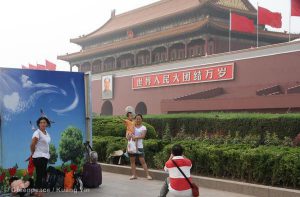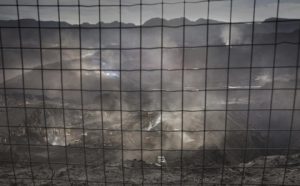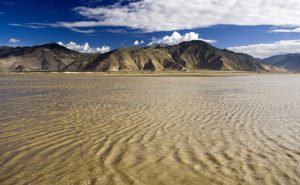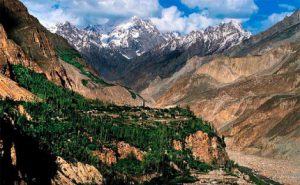“Golden Week” was anything but golden for Beijingers as the city was once again blanketed by heavy haze. The air quality index climbed above 400 during the October national holiday period, a level more than 10 times higher than the country’s ambient air quality standard. Buildings and pedestrians were submerged in the week-long smog, even disrupting travel and sporting events.
People already worry that this episode might merely raise the curtain for Beijing’s signature air pollution to grip the city over the long winter months. On Weibo (Chinese twitter), Chinese netizens are starting discussions on where they would flee to in order to escape the worst episodes. More pragmatic steps have also been taken. Orders of N95 masks on Taobao (Chinese ebay) are ramping up, driven by fears of a repeat of last winter’s “Airpocalypse”.
The Chinese public cannot tolerate it anymore. Topping the list with other profound concerns such as inflation, corruption, and inequality, 47% of the interviewees told a survey by the Pew Research Centre that air pollution was a “very big problem”.
For Beijing, it is indeed depressing to know that it is only a matter of time (and unfavourable weather patterns) until the next round of haze hits. What should we see handled differently this winter to prevent a repeat of last year?
The first and most influential response would be to accelerate the process of scaling back coal consumption. Back in September, the Chinese State Council issued its most comprehensive plan to tackle air pollution to date. Controlling coal consumption is a feature element of this document. Combined with commitments from the provincial areas of Beijing, Tianjin, Hebei, and Shandong, China aims to reduce coal consumption from these four provinces by 83 million tonnes by 2017 – the first time in history that the government has mandated negative growth targets for coal.
However, the exact roadmap of the reduction is unclear. There are already numerous precedents where Chinese officials have outlined ambitious targets only to later face difficulties in fulfilling them. The last minute hustling by provinces to try to achieve energy intensity targets in 2009 is the most prominent case in point.
Apart from coal, an emergency plan for severe air pollution days would also help. An interim emergency plan has been provisionally applied in Beijing since last winter. The final plan, which is expected to be released by the end of this year, is likely to be a beefed-up version of the interim plan. Leaked information has suggested that Beijing will implement an “odd-even” vehicle ban for heavily polluted days similar to the one imposed for the 2008 Beijing Olympics. This is a scheme where cars are only allowed on the roads on alternate days depending on their odd or even plate numbers. It is unclear exactly under what circumstances the government would impose the ban, but its imposition would effectively bring half of Beijing’s six million vehicles off the road on a given day.
A third element that we need is more in-depth research into the causes and sources of air pollution, as well as a thorough scientific assessment of its health impacts. When PM 2.5 became the buzzword in the winter of 2011, public health and environment academics were almost caught off guard. Two years on, no authoritative scientific source has confirmed where Beijing’s pollutants come from. Whilst there has been a shift in attention to neighbouring provinces such as Hebei, local emissions originating from Beijing and its suburbs should not be ignored. The ongoing uncertainty has led to some novel notions, with one municipal official creating public debate by floating the idea that cooking fumes’ contribution to PM 2.5 was ‘not insignificant’.
Two new projects led by the Ministry of Environmental Protection (MEP) – one seeking to map out PM emissions sources in key regions, the other attempting to establish a nationwide monitoring network of the health impacts of haze — are late but urgently needed. The success of these projects is tied heavily to the extent to which the MEP, as the sole custodian of China’s air pollution data, is willing to design an inclusive process, improve data access, and maximize the impact of the research.
Last but not least, a compliance system needs to be enforced. Relevant authorities need to be accountable to the public. By linking air pollution with the cadre performance review, the State Council’s action plan is no doubt a step in the right direction, but follow-up checks on how this unfolds in practice is essential. Similar cadre evaluation approaches have, for example, been applied to the delivery of energy and CO2 intensity targets, but punishments for non-compliance were never fully clarified. In governing air pollution, the government needs to act more responsively by disclosing the consequences of failing to meet targets.
Taking these elements together, it seems like the toolkit to guarantee us a blue sky is already in the government’s back pocket. Beijing recently earmarked a 5 billion RMB package for mitigating air pollution in the Huabei region. Performance-based mechanisms were introduced to match the allocation of finance closer with real progress achieved. Meanwhile, at a press conference of the recently concluded APEC meeting, a Beijing government spokesperson told reporters that “compared to the 2008 Olympics, the city is better prepared to deal with severe air pollution days”, in part referring to the city’s host role for the summit next fall. He promised that Beijing will “adopt specific measures in accordance with the air quality then”.






